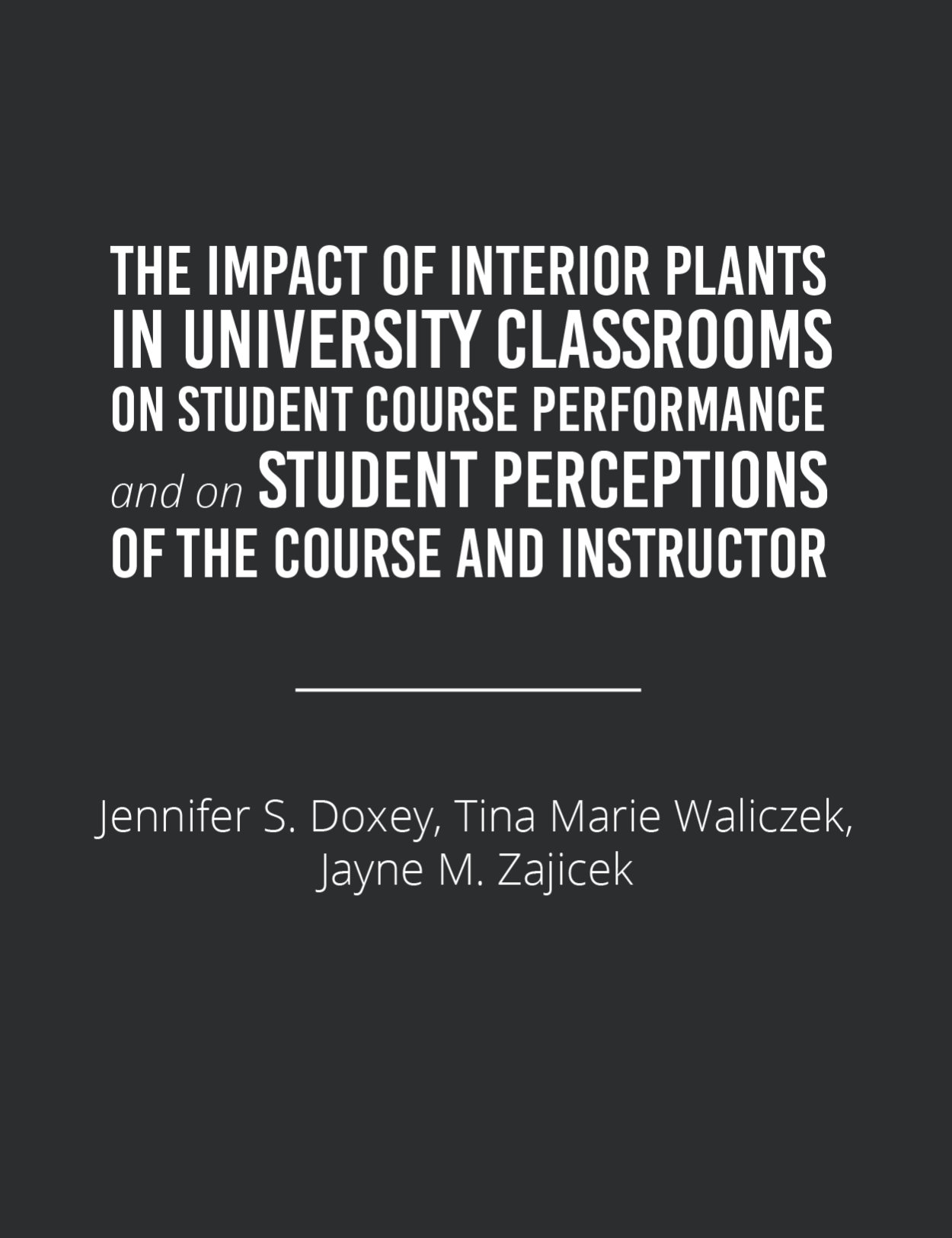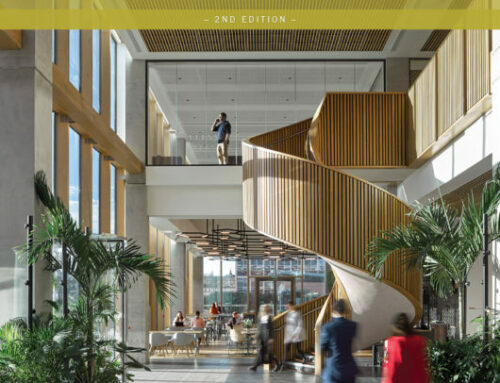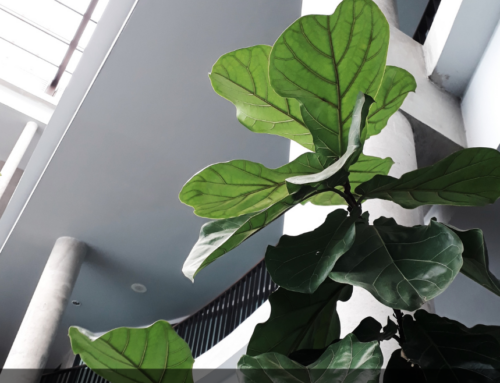Interior Plants & Student Course Performance

The main objective of this research was to investigate the impact of plants within a university classroom setting on course performance and on student perceptions of the course and instructor. The study was designed to include a minimum of two classes of the same coursework taught by the same professor in the same room during one semester. Three sets of two classes each and 385 students were included within the study. Throughout the semester, the experimental class of students was treated by including an assortment of tropical plants within the classroom. Plants were not present in the control classroom of the study. The official university course and instructor evaluation survey was administered at the end of the semester. Additionally, each student provided demographic data, including class rank, gender, and ethnicity. To measure course performance, the professor for each course reported each student’s grade for the course. No statistically significant differences were found in comparisons of grades/student course performance (P = 0.192). However, statistically significant differences were found in comparisons of overall course and instructor evaluation scores of treatment and control groups (P = 0.065). Statistically significant differences were found in comparisons of the individual courses/classrooms between control and treatment groups on statements in subsections of the course and instructor evaluation survey, including the areas of ‘‘learning,’’ ‘‘enthusiasm (of instructor),’’ and ‘‘organization (of instructor).’’ In these comparisons of the treatment and control groups, the differences that were most apparent were in students who had class in the classroom that was windowless and stark. The plants appeared to have the greatest impact on students in the room that was void of other natural elements.





